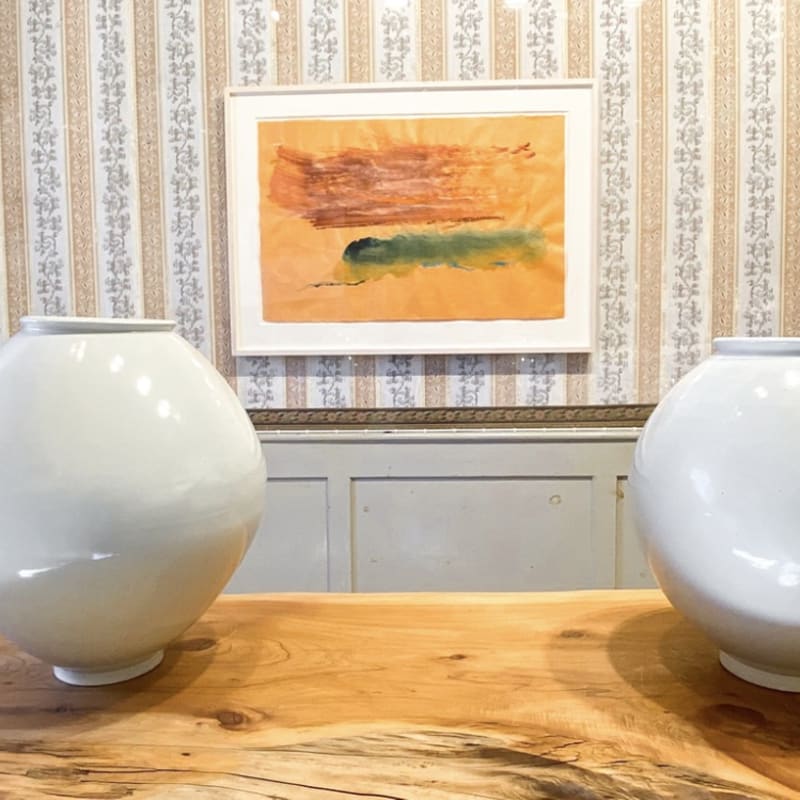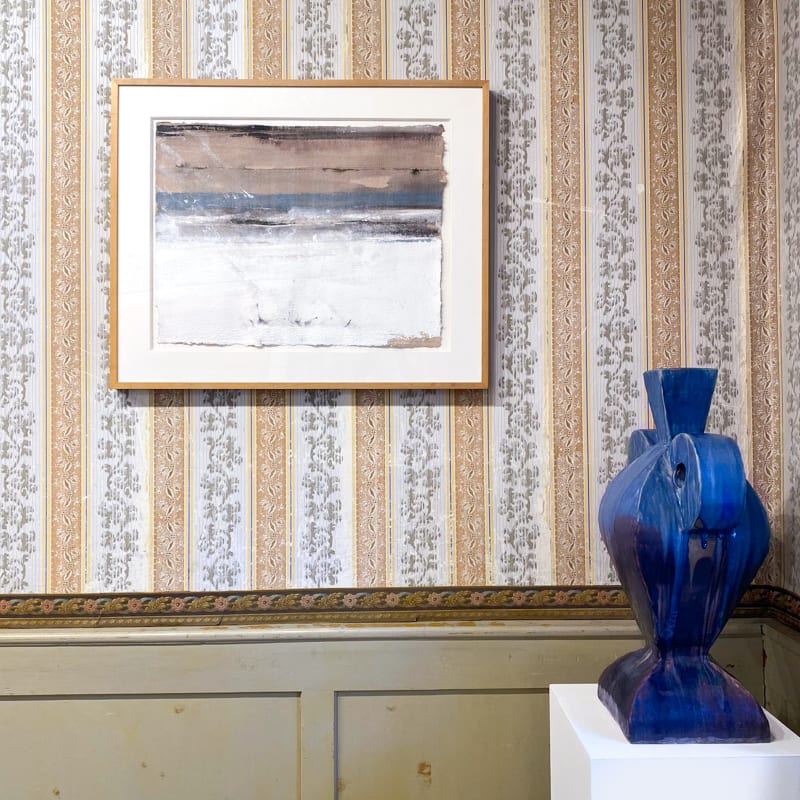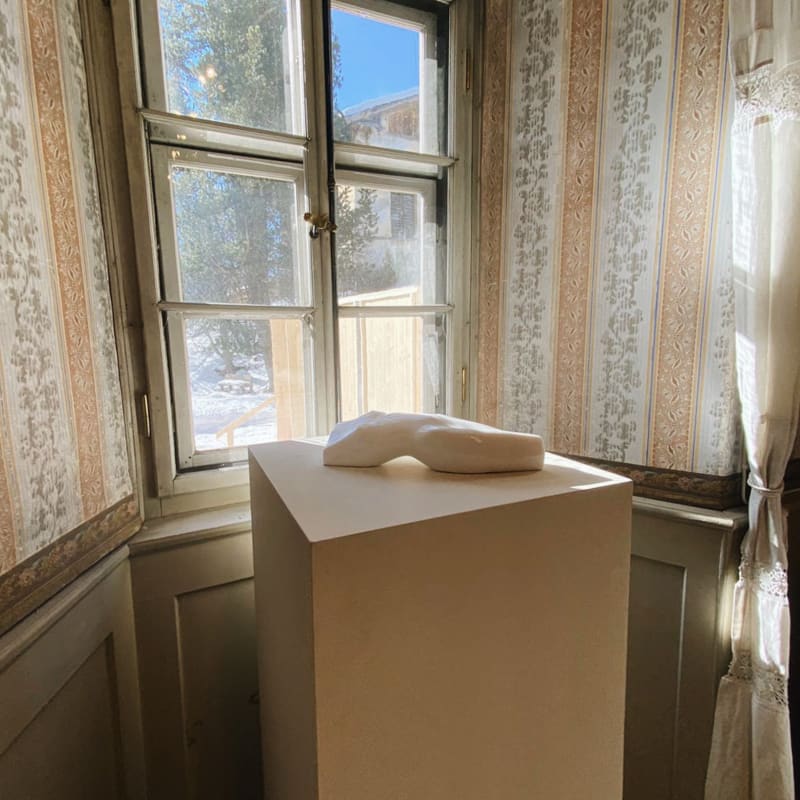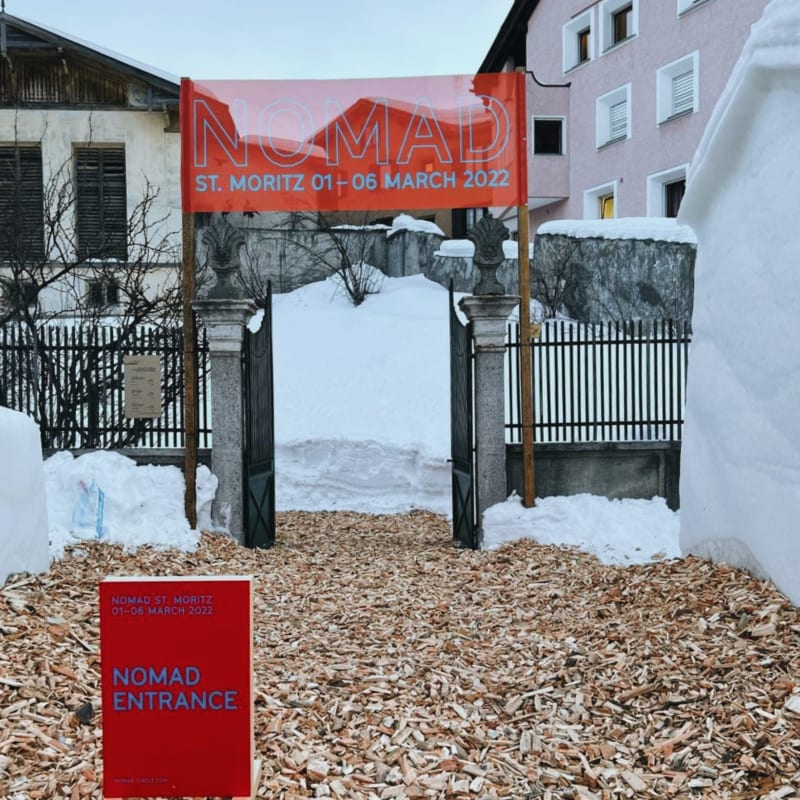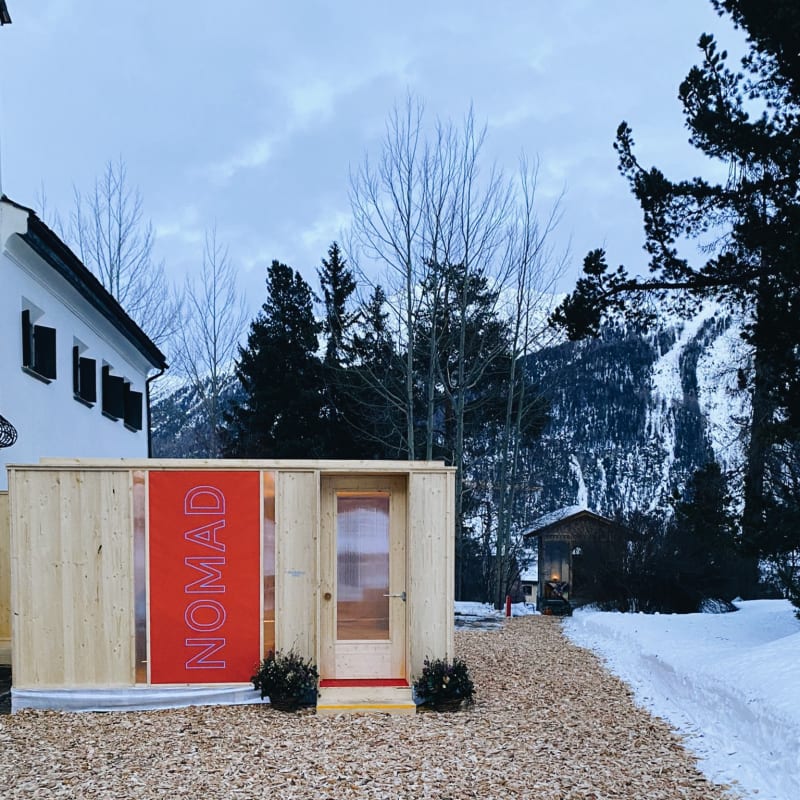Tristan Hoare presents a dialogue between contemporary objects and abstract expressionism: Moon Jars by the "mother" of Korean ceramics, Kim Yikyung, ceramic vessels by American artist Peter Schlesinger and a marble nude by British sculptor Mick Cooper will be displayed alongside Helen Frankenthaler’s lyrical works on paper and a bronze by Hans Arp.
The booth's centrepiece are Kim Yikyung’s Moon Jars. The distinctive shape of the Moon Jar is unique to Korea, emerging in the 17th century and reaching its peak in the 18th century Joseon period. Due to the large size of the Moon Jars, the vessels cannot be made in one piece on the potter's wheel. Instead, the upper and lower halves of the jar are produced separately and joined in the middle, forming a rounded body, said to resemble a full moon.
Alongside Yikyung’s Moon Jars will be artworks by American artist Peter Schlesinger. Schlesinger's ceramics display a love of the sensuous nature of clay and the artist's interest in the history of pottery. Each work is an investigation of clay, where no surface is the same and no form repeated, with shapes and glazes that are both familiar and new, naïve and sophisticated.
Joining Schlesinger and Yikyung's work is a marble sculpture by British artist Mick Cooper. Cooper’s sculptures have a deep and quiet energy, perhaps imparted by the long hours of chipping which bring the form forth from the stone, revealing not only the inner calm and beauty of the medium but also the essence of the subject itself.
These contemporary objects converse with the abstract expressionism of Helen Frankenthaler and organic abstraction of Hans Arp. Renowned for her abstract paintings, Frankenthaler’s works on paper are the result of the artist’s dialogue with colour, line, space, and gesture. By applying thinned acrylic washes to unprimed paper, richly saturating it like a dye, figure and ground become one and the same, a new form united through colour.
Arp’s approach to form was often referred to as organic abstraction: his lines suggested natural motifs, while remaining entirely abstract. Rather than beginning with a subject, Arp generated the form first, and titled his works after they were completed. In this way, he sought to minimise the intervention of the conscious mind.


